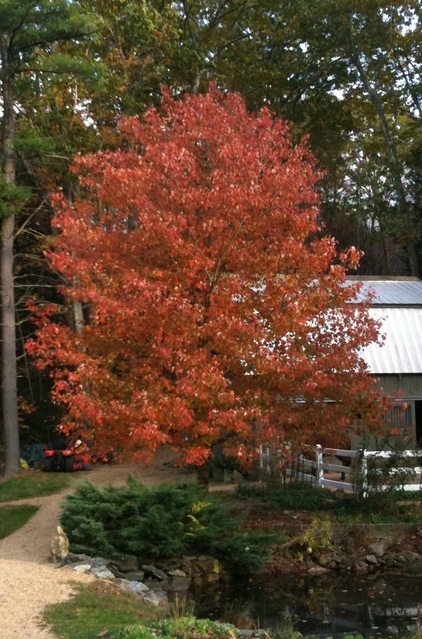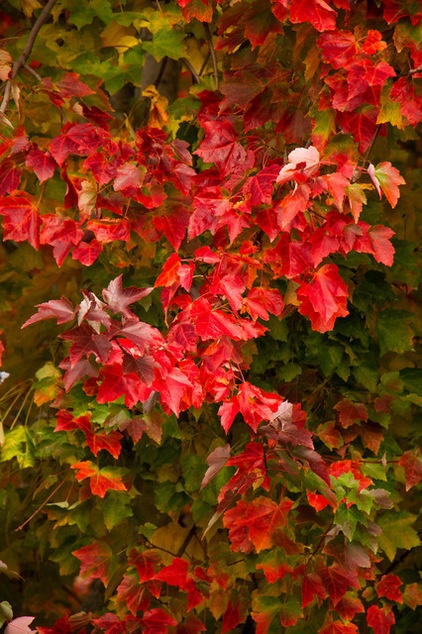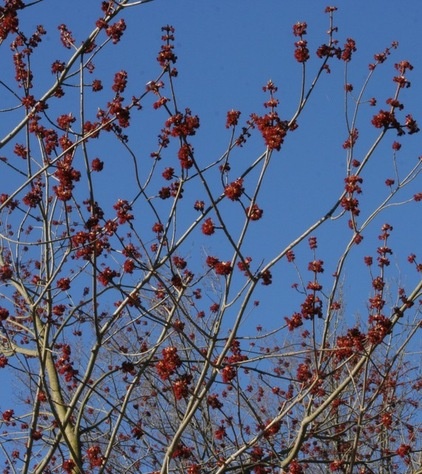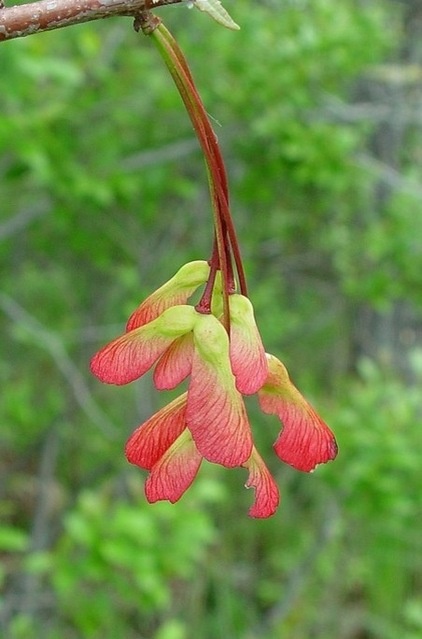Great Design Plant: Acer Rubrum Brings Shade and Beauty
http://decor-ideas.org 05/02/2015 01:13 Decor Ideas
If you have room for just one large tree, consider red maple (Acer rubrum). Well adapted to the acidic soils of the East Coast, this beautiful shade tree provides beauty and interest through the seasons, starting with glowing red flowers in spring and culminating with an autumn foliage show of fiery orange and red that rivals that of the iconic sugar maples of New England.

Botanical name: Acer rubrum
Common names: Red maple, swamp maple
Origin: Native to wetlands and flood plains along the Eastern Seaboard of the U.S.
Mature size: 40 to 75 feet tall and 20 to 50 feet wide
Where it will grow: Hardy to -40 degrees Fahrenheit (USDA zones 3 to 9; find your zone)
Light requirement: Full sun or light shade
Water requirement: Low
Soil: Moist, acidic soil is best but will grow in dry, acidic soil rich in organic matter
Benefits and tolerances: Adaptable tree that grows even in wet soil; easy to transplant and fairly pollution tolerant; good plant for wetland restorations
Seasonal interest: Red spring flowers; red leaf stalks in summer; blazing scarlet and orange fall foliage
Pruning requirement: None, except for removal of any damaged branches
When to plant: Spring or fall
Caution: Never plant red maple where horses can reach their leaves. Red maple leaves are toxic to horses when green and slightly wilted (if a branch in full leaf breaks off the tree, the fresh leaves may be slightly wilted).

Distinguishing traits. Deciduous shade tree with glossy, lobed green leaves in summer that turn shades of orange and red in fall. It has a rounded, spreading crown (some cultivars have a more pyramidal shape).
One of the earliest of all the flowering trees in New England, red maple blooms in early to mid-April with its conspicuous red flowers.
How to use it. Grow it as a specimen tree in a spot that maximizes its fall visibility, or along a street or driveway. Do not fertilize, but mulch well with wood chips or the tree’s own leaves to feed and protect the shallow root systems, extending the mulch out to the tree’s drip line.
It’s difficult to plant beneath a red maple, because its surface-level roots suck up most available soil moisture, especially close to the trunk flare. Try planting native ground covers that can tolerate dry shade, such as golden star (Chrysogonum virginianum), foamflower (Tiarella cordifolia) and red columbine (Aquilegia canadensis). Plant ground covers at least 3 to 4 feet away from the trunk to avoid damaging the maple’s roots and to encourage them to spread into the root zone. If you grow red maple in a lawn, avoid spreading lawn fertilizers anywhere in the tree’s root zone.

Wildlife value. Red flowers in early spring supply valuable nectar and pollen to native bees and tiny (nonbiting) flies. Red maple provides excellent cover and nesting sites for birds, and the seeds are eaten by birds and squirrels. Plants in the maple (Acer) genus are hosts for at least 285 different species of Lepidoptera (butterfly and moth) caterpillars, providing plenty of insect biomass for birds feeding their babies in the nest.

Planting notes. Red maple is easy to grow from seed. Collect the seed helicopters, called samaras, when they fall. Sow the entire seed, wings and all, ¼ inch deep in a large container of good garden soil to get it established for a year or two. Or sow seeds directly in the ground where you want your red maple tree to grow. Water regularly before and after germination, and keep saplings well protected in the first few years from mowing and foot traffic.
Sources for plants. Red maple saplings are available at most nurseries, but if you live in the North, ask for plants with a Northern seed provenance — cultivars sourced from Southern tree nurseries are genetically different from the Northern species and not always hardy in the more severe winters of the northern U.S. For the same reason, avoid buying from mail-order tree companies located in regions other than your own.
The hardiest red maples for your area are those already growing in natural areas nearby. Red maple trees do self-seed, especially in wet soils, so if red maple trees are growing in your neighborhood already, look underneath them for young seedlings you can transplant. Be sure to correctly identify maple seedlings — the invasive, nonnative Norway maple (Acer plantanoides) also heavily reseeds into natural areas. Norway maple leaves turn yellow instead of red in fall, and their leaf stalks exude a white sap if broken (red maple does not).
More:
8 Reasons to Plant a Great Tree
Browse plants native to other regions of the U.S.
Related Articles Recommended












